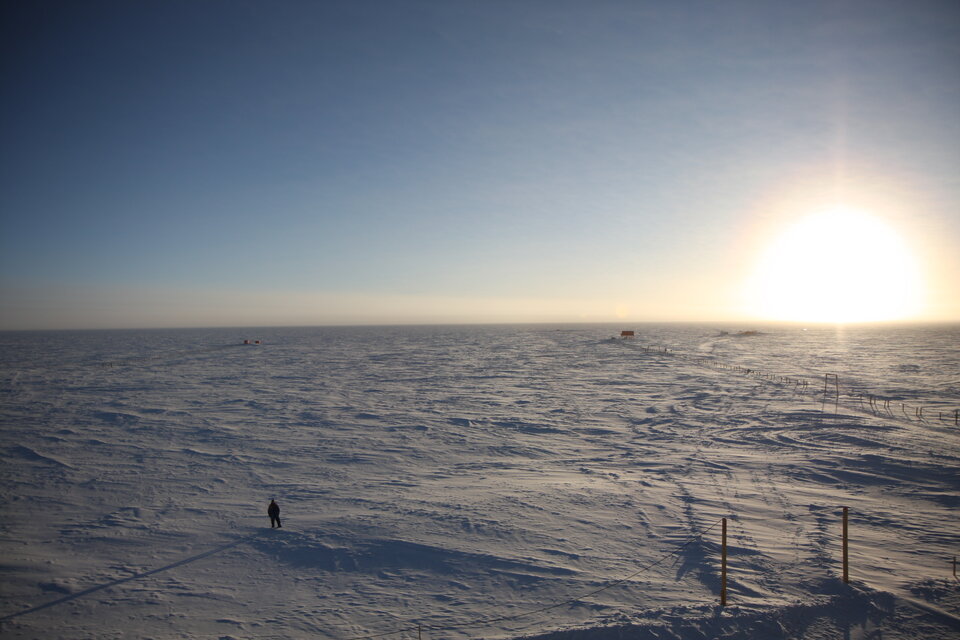Monitoring wildlife on the most inaccesible continent
Home to the coldest places on Earth, Antarctica is also the native continent of some extraordinary wildlife. Satellites have been used to help keep track of these creatures – some of which travel vast distances over this forbidding landscape.
Emperor penguin colonies have been traced through their guano. The droppings leave a distinctive mark on the ice that can be seen with Earth observation satellites. Research by the British Antarctic Survey (BAS) showed the establishment of new colonies and relocation of others, but the BAS also found no trace of particular colonies where they had been expected. The guano traces are not the perfect mechanism for tracing small birds – the staining of the ice was not obvious enough in colonies that had fewer than around 500 birds. The next step is to use higher resolution satellite data to count the birds within the colonies and develop techniques to predict the future population.
High resolution satellite data has already been used to monitor another species – the Adelie penguin. The Australian Antarctic Division has been counting the birds in different parts of Antarctica both on the ground and from space. They used private satellites to supply the images.
Their research showed large increases in Adelie population in Eastern Antarctica – possibly due to less competition from whales and other species for their diet of krill, and possibly because krill was easier to reach following the decline in sea ice. Other areas showed a decline in the Adelie population.

By contrast with the flightless penguins, albatrosses are known to fly thousands of kilometres out to sea. Most of the 21 species are endangered, and satellite technology has been used to try to find out why their numbers have declined so rapidly.
The British Antarctic Survey has followed the behaviour of 120 pairs of the wandering albatross species having equipped them with satellite tagging, keeping track of them year after year. Albatrosses can live for a long time, but this also means it takes many years for them to reach maturity and breed.
Albatrosses live at sea for long periods, because they have a special adaptation in their beaks to filter out salt from water allowing them to drink it. Satellite tracking meant that the researchers could find out more about where the albatrosses were going during their long trips at sea. The British Antarctic Survey concluded that encounters with fishing fleets were responsible for many deaths among albatrosses, who swallowed fish hooks, or broke wings colliding with fishing lines.
Changes have been made to fishing practices in some areas to help protect the albatross and the British Antarctic Survey reported that thousands fewer fatalities were recorded in these areas. The satellite data also showed the amazing journeys the albatrosses undertook – flying all the way around Antarctica.
International efforts are also being made to track the world’s largest animal, the blue whale, as it travels around the Southern Ocean. The Antarctic Blue Whales project has used a combination of acoustic tracking and satellite tagging to find out more about the whales’ behaviour. The sounds the whales made in the ocean were recorded, while the movements of two whales were also tracked by satellites. The information is to be used to develop conservation methods for the species, which was almost wiped out by industrial whaling in the early twentieth century.




